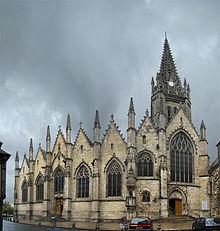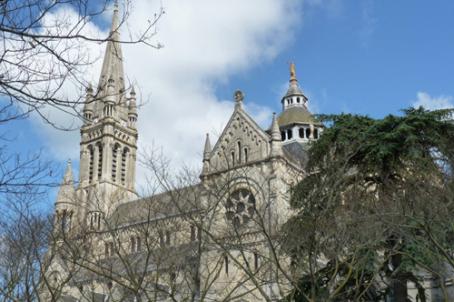Church of Notre-Dame
The new glass building has a remarkable architectural asset: it is a link between the Flamboyant Gothic and Renaissance styles. This transition from one style to the other is very visible on the south façade. This one also has a rarity: a beautiful pulpit to preach outside where the preachers of the Counter-Reformation could unleash themselves against the Huguenots... installed in the building opposite, across the street!
About this building
The church of Notre-Dame was founded around 1060 by Robert I of Vitré and donated in 1116 to the Abbey of Saint-Melaine in Rennes. It was almost entirely rebuilt in the 15th and 16th centuries: only the choir remains of the old church, whose windows were modified in the 15th century. The southern façade, built in two campaigns (1480-1500 and 1530-1540) has seven gables separated by pinnacle buttresses. It is adorned with a beautiful pulpit for preaching. The west façade dates from the 1580s, its door has kept its original leaves, dated 1586. The collateral and the north crosspiece were rebuilt in 1467. The spire of the central tower (1420-1442) was rebuilt in stone in 1858.






